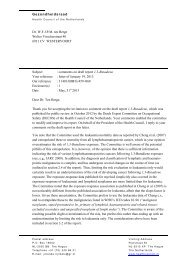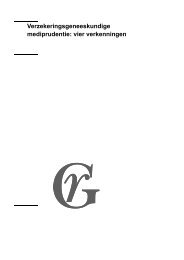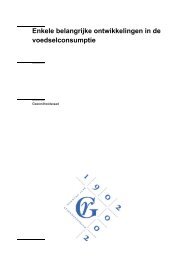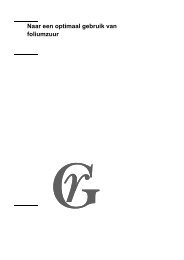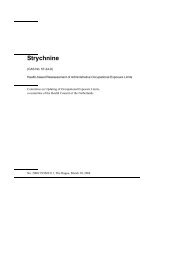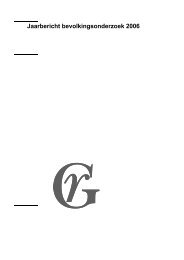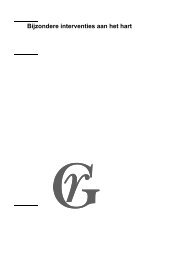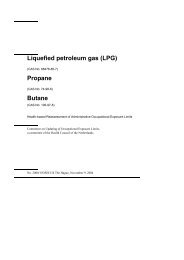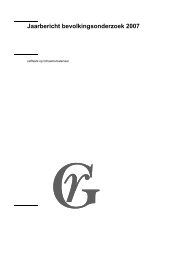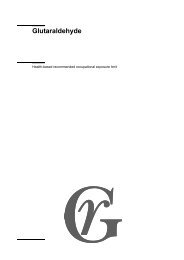hoofdstuk 2 - Gezondheidsraad
hoofdstuk 2 - Gezondheidsraad
hoofdstuk 2 - Gezondheidsraad
You also want an ePaper? Increase the reach of your titles
YUMPU automatically turns print PDFs into web optimized ePapers that Google loves.
population in the Netherlands with these new weighting factors leads to a mean<br />
value – an effective dose of 2.5 milliSievert (mSv) – which hardly deviates from<br />
earlier values. More than one half of this dose is produced by radon found in<br />
building materials and other sources and by diagnostic applications in medicine.<br />
The highest effective doses in medical diagnostics are produced by abdominal<br />
CT scans, angiography and interventional radiology. There has been a steady<br />
increase in the total number of diagnostic radiology procedures. The mean dose<br />
per capita has remained constant, however, through digitalisation and other<br />
improvements.<br />
Among those affected through occupational exposure, airline industry<br />
employees and those involved in the production of isotopes receive the highest<br />
effective mean annual dose (1.34 mSv). They are followed by workers engaged<br />
in materials research with non-destructive mobile testing units (1.06 mSv) and<br />
those who are employed in interventional radiology (0.47 mSv).<br />
Effects<br />
The biological effects of ionising radiation are either deterministic or stochastic<br />
in nature. Deterministic effects (also known as “tissue reactions”) appear above a<br />
specific threshold dose. The higher the dose, the more pronounced the effect. The<br />
appearance of stochastic effects involves an element of chance: the effect (e.g.<br />
cancer) either appears or it does not. The higher the dose, the greater the risk of<br />
health impairment.<br />
Much is known about tissue reactions resulting from exposure to ionising<br />
radiation. The nature of the effect, as well as the relationship between its intensity<br />
and the radiation dose, are dependent on the body part exposed. During protracted<br />
intervention procedures supported by the use of medical radiology the<br />
threshold dose for skin damage may be exceeded. Erythema can be a symptom in<br />
the short term. In the long term, this burning may lead to the death of skin cells<br />
and the formation of connective tissue.<br />
Until recently, less was known about stochastic effects. Radiation exposure<br />
can cause DNA changes in the short term that are not immediately observable. In<br />
the long term, damage may lead to cancer or genetic effects.<br />
Cancer<br />
An increased cancer risk in the long term is the most detrimental health effect of<br />
exposure to ionising radiation. The types of cancers that appear after exposure to<br />
14 Risico’s van blootstelling aan ioniserende straling




